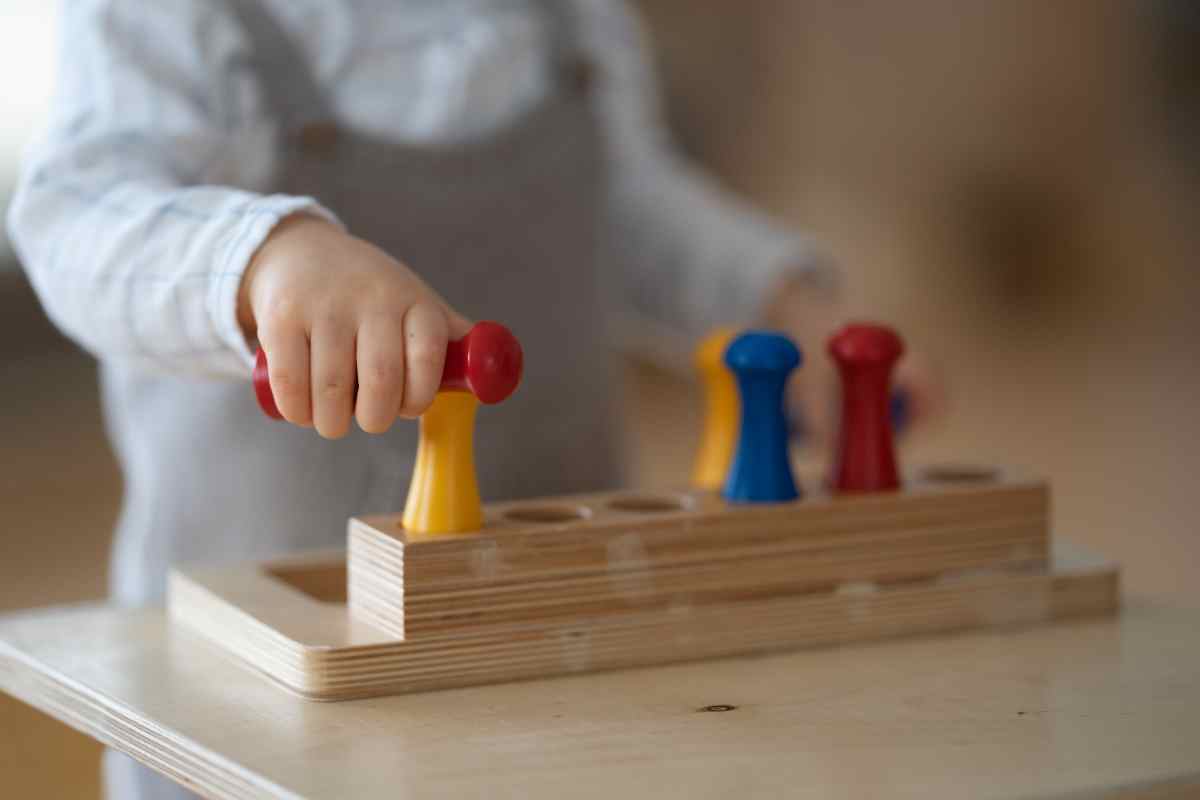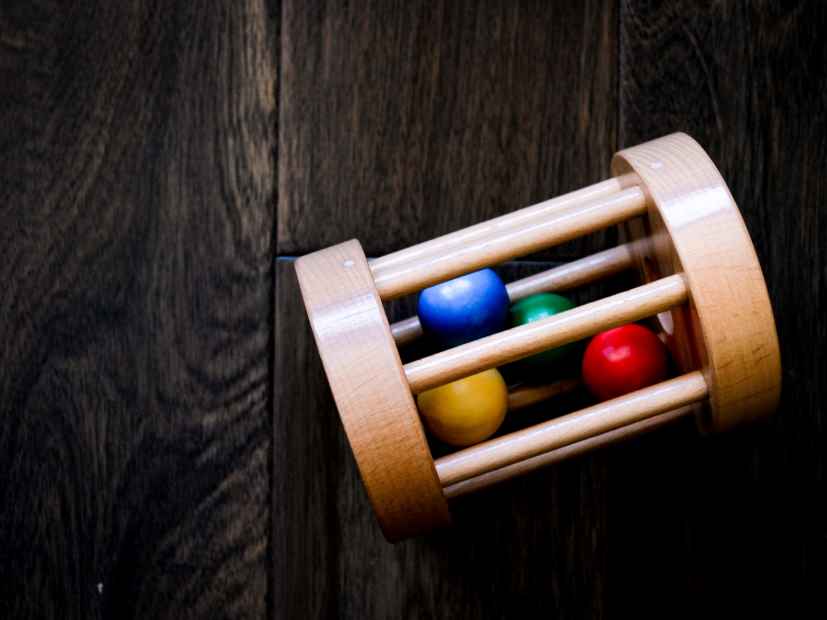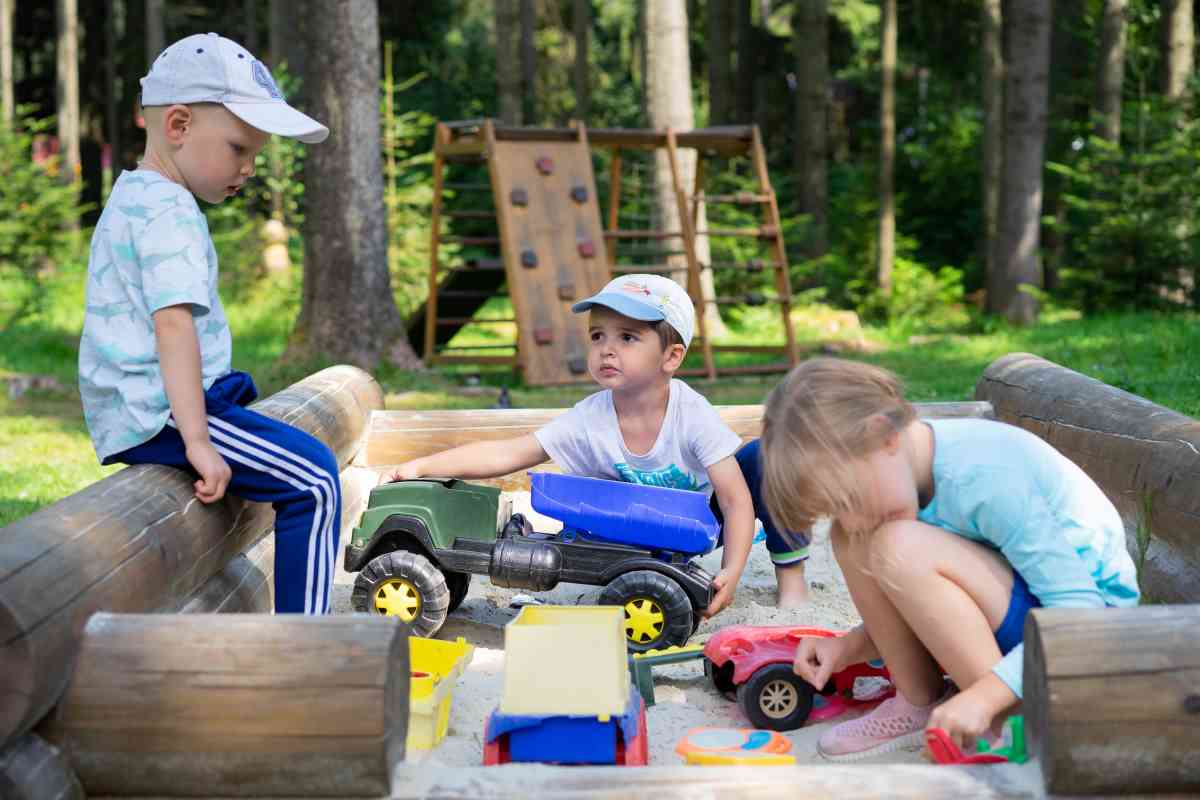Montessori education
Montessori vs Reggio Emilia: Which is Best for Your Child?
Choosing the right educational approach for your child is one of the most important decisions a parent can make. Two popular alternatives to traditional schooling are the Montessori method and the Reggio Emilia approach. Both focus on child-driven, personalized learning but have key differences in philosophy and environment. This article provides an in-depth comparison of Montessori and Reggio Emilia to help you determine which is the best fit for your child.
Table of Contents
A Brief Introduction
The Montessori education emphasizes independent learning, freedom within limits, and respect for a child’s natural psychological development. It was developed over 100 years ago by Dr. Maria Montessori. Montessori environments are carefully tailored to students with student-chosen work, uninterrupted blocks of work time, guided choices of work, and specially trained teachers.
The Reggio Emilia approach is an innovative approach developed after WWII in Reggio Emilia, Italy. It values the natural development of children and encourages them to explore their interests through projects. Reggio Emilia highlights self-guided learning, collaboration between students and teachers, documentation of learning, and the environment as a third teacher.
While both are child-centered approaches, there are notable differences in philosophy, environment, and implementation. This article will uncover the nuances between these two progressive methods to help you make an informed decision for your early learner.
Understanding Montessori Education
The Montessori Philosophy
The Montessori philosophy is based on fostering a child’s natural inclination to learn. Montessori classrooms allow children to choose their work and encourage self-correction. Key principles include:
- Independence: Children are given freedom to select activities that interest them without interference. This allows them to experience personal independence and autonomy.
- Respect: Teachers and students are expected to treat one another with respect and politeness. The environment also teaches respect for materials, others, and self.
- Hands-on learning: Montessori materials engage multiple senses to provide concrete learning opportunities. Children learn by manipulating materials rather than simply by observing.
- Self-pacing: Children progress at their own pace rather than following a standardized curriculum. Students receive individualized guidance based on their needs and interests.
- Mixed age classrooms: Montessori classrooms have children of mixed ages working together. Older students teach concepts to younger peers, reinforcing their learning while developing leadership and social skills.
The Montessori Classroom
Montessori classrooms are beautifully prepared environments tailored to foster student learning and growth. Key features include:
- Child-sized furniture and materials
- Materials organized into categories on low, open shelves
- Materials are aesthetically pleasing and kept meticulously clean
- Open areas for movement
- Stations for activities like art, reading and sciences
- Special designated spaces like a library, kitchen, and garden
The prepared environment entices children to interact and freely select activities. Teachers mindfully arrange and update materials to align with students’ interests and needs.
Teaching Methods
Montessori teachers facilitate learning rather than direct teaching. Their role is to prepare the environment, observe each student, and provide individual guidance. Key teaching methods include:
- Observation: Teachers closely observe students to understand their developmental needs, interests, and learning styles. This informs how teachers interact with each child.
- Individual Work Cycle: Students have three-hour time blocks to work independently on activities of their choice without interruption. This allows for deep focus and concentration.
- Guided Choice: Within the parameters of the classroom, children are free to choose activities. Teachers may make strategic suggestions to guide students toward concepts they need reinforcement on.
- Spontaneous Teaching: Teachers give brief, targeted lessons to individual children or small groups based on individual needs and curiosities rather than a fixed curriculum.
- Minimal Interference: Children are permitted to make mistakes and correct themselves without teacher interference. This encourages critical thinking, problem solving and independence.
Benefits of Montessori
Research shows Montessori education provides a variety of benefits:
- Fosters high achievement levels
- Supports executive function skills
- Enhances social-emotional development
- Facilitates intrinsic motivation for learning
- Provides multi-age social opportunities
- Encourages independence and self-discipline
In particular, Montessori produces students who are independent, creative problem solvers. The flexible environment helps children grow at their own pace and discover their passions.

Exploring Reggio Emilia
Reggio Principles
The Reggio Emilia approach is based on core principles that guide the philosophy and environment:
- Child-centered: Learning is based on the interests and motivations of each child. Teachers nurture this intrinsic motivation.
- Collaboration: Students collaborate with teachers and peers in their learning. There is partnership, dialogue and cooperation.
- Environment as third teacher: The learning environment in Reggio Emilia is dynamic and intentionally designed to inspire exploration.
- Project-based: Learning revolves around open-ended, long-term projects that allow for deeper investigation based on children’s interests.
- Representational development: Children use symbolic languages like drawing, movement and building to represent their understanding.
- Documentation: Children’s works and learning processes are heavily documented through videos, photographs and teachers’ notes to provide a thorough understanding of each learner.
The Reggio Environment
The Reggio Emilia environment is welcoming, beautiful, and filled with natural light. Key features include:
- Ateliers: Art studios that allow children to freely create, explore materials, and express themselves.
- Piazzas and mini-piazze: Gathering spaces for children to collaborate, discuss ideas, and display projects.
- Flexible space: Classrooms have movable walls, tables and chairs for flexible setups tailored to work being done.
- Nature and natural materials: The environment incorporates nature through plants, animals, and materials such as clay and wood.
- Transparency: Glass doors and windows give clear sightlines between classrooms and throughout schools to encourage collaboration.
- Documentation: Walls showcase photos, videos, sketches, and quotes that document student learning processes and growth over time.
- Aesthetics: Great intention is placed on making the space beautiful yet functional.
The Reggio Teacher
Reggio Emilia teachers act as co-learners and collaborators with students. Key aspects of their role include:
- Facilitating: Guides students and asks thoughtful questions rather than providing facts and answers
- Observing: Careful observers of student behavior, learning processes, interests and discussions
- Documenting: Keeps notes, takes photos/videos, collects student work to create a visual history of learning
- Supporting: Makes materials accessible, oversees classroom dynamics and models respectful collaboration
- Partnering: Works together with other teachers and parents to create rich learning experiences
- Guiding: Makes suggestions to nudge students’ thinking rather than dictating what to do
Benefits of Reggio Emilia
Research indicates Reggio Emilia provides the following benefits:
- Promotes creativity, critical thinking and risk-taking
- Encourages social-emotional development
- Fosters collaboration and communication skills
- Enhances observational skills
- Develops self-guided learning and initiative
- Supports emerging literacy and numeracy
- Values the “hundred languages of children” including art, music and drama
In particular, Reggio Emilia helps children grow as communicators, collaborators and creative problem solvers. The open-ended environment fosters deep intellectual engagement.
Key Differences Between the Approaches
| Area | Montessori | Reggio Emilia |
|---|---|---|
| Philosophy | Self-directed, individual learning with guidance | Collaborative, project-based learning |
| Curriculum | No fixed curriculum. Individual work plans based on interests. | Emerging curriculum based on projects that arise from student interests |
| Learning Approach | Individual choice of hands-on activities from structured options | Collaborative, open-ended projects using various materials |
| Instruction | Minimal teacher instruction, emphasis on exploration | Teacher engages as co-learner and facilitator |
| Assessment | Observation-based. Students advance at their own pace. | Documentation through notes, videos and portfolios to track learning |
| Classroom Setup | Individual workspaces, structured materials. Focus on order. | Flexible spaces, open-ended materials. Focus on beauty. |
| Role of Teacher | Observer, guide, and mentor | Co-learner, collaborator, facilitator |
| Role of Peers | Limited peer interaction. Mixed age groups. | Extensive peer collaboration and learning from each other |
While both are student-centered, Montessori puts more focus on the individual learner whereas Reggio emphasizes group collaboration. The Montessori day is structured; Reggio Emilia is open and dynamic. Montessori materials have a predetermined purpose; Reggio materials are open-ended. Both value student choice but Montessori steers the choices while Reggio offers full flexibility.

The Impact on Child Development
Both Montessori and Reggio Emilia provide enriched environments that foster child development.
Cognitive Development
- Montessori – Materials and activities promote sensory exploration, concrete learning and development of academic skills at the child’s own pace. Mixed age classrooms provide opportunities to reinforce learning by teaching concepts to others.
- Reggio – Complex projects encourage critical thinking as children engage in in-depth study of topics with a peer community. Children are viewed as natural researchers who learn through exploration and experimentation with teachers supporting their interests.
Social and Emotional Growth
- Montessori – Freedom of choice helps build independence, self-confidence, and intrinsic motivation. Grace, courtesy, and conflict resolution lessons teach social skills. Older peers model positive behavior.
- Reggio – The focus on collaboration, discussion and joint work enables healthy relationship building and negotiating compromises. Children are empowered to share ideas and take on collaborative leadership roles.
Creativity and Innovation
- Montessori – The process of freely exploring materials in a thoughtfully prepared environment naturally sparks creativity as children imagine, design and create.
- Reggio – Symbolic expression through art, construction and drama fosters creativity. Teachers support innovative thinking during project work. Documentation makes the learning visible and valued.
Communication and Language
- Montessori – Language materials like sandpaper letters and the movable alphabet provide hands-on learning. Presentations develop public speaking skills. Free choice and exploration create natural vocabulary building.
- Reggio – Collaborative projects provide need and motivation for language and conversation. Documentation captures and displays children’s words and ideas. Creative expression in many media develops communicative abilities.
In summary, both models nurture development across cognitive, social-emotional, creative, and communicative domains. Montessori provides more structure while Reggio fosters collaboration. Your child’s learning tendencies should guide you toward the right approach.
Choosing Between Montessori and Reggio Emilia
When choosing between Montessori or Reggio Emilia, consider the following:
- Learning style: Does your child prefer independent or collaborative work? Does structure or flexibility align better to their needs? Observe your child’s tendencies.
- Interests: Will hands-on materials or large creative projects better capture your child’s interests? What activities do they gravitate toward?
- Developmental needs: Assess if your child needs more freedom or more structure. Do they need help developing independence or social skills? Look at their strengths and growth areas.
- Parental values: What do you value most – creativity, academics, collaboration, problem solving? Align educational priorities for your family with the approach.
- Availability: Research the accredited programs in your area. Availability may dictate options, especially as children get older.
- Cost: Montessori tends to have higher upfront costs but relatively low student-teacher ratios. Reggio requires significant investment in professional development and documentation. Understand budget considerations.
Tour schools, observe classrooms, meet with teachers, attend informational sessions, and read parent testimonials. Comparing perspectives with your child’s needs helps ensure you find the best fit.
Montessori and Reggio Emilia Schools
There are over 5,000 Montessori schools in the United States and Canada. The North American Montessori Teacher Association provides a school search tool to find accredited Montessori schools. Be sure to look for schools accredited by the Association Montessori Internationale (AMI) or the American Montessori Society (AMS) to ensure quality implementation.
Reggio-inspired schools are less common, but there are consortiums like the Reggio-Inspired Network of Minnesota that provide resources to find schools. Look for key aspects like collaborative projects and documentation when evaluating quality. Many Montessori schools are starting to integrate principles from Reggio Emilia as well.
Public magnet or charter school options also exist if looking for a free program. However, the cost of quality materials and teacher training does get reflected in higher tuition at private schools. Take time to research all the options in your area.

Parent Experiences With Montessori and Reggio
“We chose Montessori because it aligned with our values of raising an independent, intrinsically motivated learner. The materials spurred our son’s interests, and we saw huge growth in his focus and academic skills.” – James, Montessori parent
“My daughter thrives in the collaborative Reggio environment. She loves big projects where she can contribute her creativity. Her communication and critical thinking have really taken off.” – Julia, Reggio Parent
“I liked that Montessori allows kids to develop at their own pace without pressure. At age three, my son wasn’t ready for structured learning, so Montessori was perfect.” – Michael, Montessori parent
“My son has learned so much from working with peers in Reggio Emilia. His social skills were always a struggle, but his confidence has skyrocketed.” – Sara, Reggio parent
Make sure to speak with current parents to hear insights based on direct experience with each approach. Visit schools to get a feel for the environment and watch how children respond.
Making the Right Choice for Your Child’s Needs
Every child is unique, so you have to evaluate the principles, environment, teaching methods and overall fit for your individual student. While both approaches have great merits, you should consider:
- Your child’s temperament – are they active or reserved, social or independent? Seek alignment with the approach.
- Learning tendencies – some students need more structure while others thrive with open exploration.
- Developmental strengths and weaknesses – tailor the approach to nurture growth.
- Your educational values and priorities – what matters most to your family?
- Availability of schools and programs in your area – assess accessible options.
Take time to reflect, research and visit programs. Trust your instincts as you determine the best approach to nurture your child’s growth and ignite their passion for lifelong learning. With commitment and engagement, both Montessori and Reggio Emilia provide enriching educational experiences.
Conclusion
Montessori and Reggio Emilia both provide nurturing environments for children to freely explore their interests and reach their potential. Montessori champions independence and student choice within a carefully prepared environment. Reggio Emilia emphasizes collaborations between children, teachers and parents. Consider your child’s learning style and developmental needs to determine which approach aligns best. Visit schools, read parent testimonials, and trust your instincts. With an insightful match, your child will thrive in their early education experience.

FAQs
What is the Montessori education method?
The Montessori method emphasizes independent learning, freedom within limits, and respect for a child’s natural development. In Montessori classrooms, children choose their own work from structured options and learn at their own pace with guidance from teachers. The environment is specially prepared to allow for hands-on exploration.
What are the key principles of the Reggio Emilia approach?
The Reggio Emilia approach values the natural development of children and encourages exploration of interests through collaborative, project-based learning. Key principles include child-centered and self-directed learning, collaboration between students, teachers and parents, the environment as a third teacher, emergent curriculum and extensive documentation of the learning process.
How do Montessori and Reggio Emilia differ in teaching philosophy?
The Montessori method focuses more on fostering independence and student choice in an ordered environment, while the Reggio Emilia approach emphasizes group collaboration, open-ended projects and dynamic learning spaces.
Which approach is better for a child’s cognitive development?
Both approaches promote cognitive development through hands-on learning, but in different ways. The Montessori method allows self-paced reinforcement of concepts, while Reggio Emilia’s projects encourage deeper critical thinking and problem solving. The best approach depends on the child’s learning style.
Are there any notable Montessori or Reggio Emilia schools near me?
The North American Montessori Teacher Association provides a school search tool to find accredited Montessori schools. Reggio-Inspired Network of Minnesota lists Reggio-inspired programs at www.rimnb.org. Do your own research to find schools in your local area.
What age groups do Montessori and Reggio Emilia programs cater to?
Montessori programs exist for children from infancy through high school. Reggio Emilia originated as an approach for early childhood education from ages 3-6, but elements can be incorporated through elementary.
How can parents decide between Montessori and Reggio Emilia for their child?
Observe your child’s learning style, interests and developmental needs, then match those tendencies with the approach that aligns best. Tour schools, read parent testimonials, watch classrooms and make the choice based on your child as an individual.
What are the main similarities between Montessori and Reggio Emilia?
They are both child-centered approaches that give children freedom to explore their interests. They both value self-directed learning and creating enriched learning environments tailored to students. Documentation of learning and development is key.
Do Montessori and Reggio Emilia schools follow a specific curriculum?
Neither follows a standardized curriculum. Montessori allows students to follow their own work plans. Reggio Emilia pursues projects that emerge based on student interests. Both approaches are driven by the children.
Are there any success stories or case studies comparing these approaches?
Parent testimonials throughout the article provide real-life examples of how children have benefited from Montessori and Reggio Emilia schools to develop their skills and passions as learners. Additional case studies could certainly be added for more perspective.
References
https://www.goodwin.edu/enews/reggio-emilia-vs-montessori/
https://nido.edu.au/news/reggio-emilia-vs-montessori/
https://www.ourkids.net/school/montessori-vs-reggio-emilia-schools
https://littlesunshine.com/reggio-emilia-vs-montessori/
https://reggioemilia.com.au/reggio-emilia-vs-montessori/
https://www.earlychildhoodeducationandcare.com/bloggers/2023/3/18/montessori-and-reggio-emilia-which-is-the-right-working-environment-for-you

